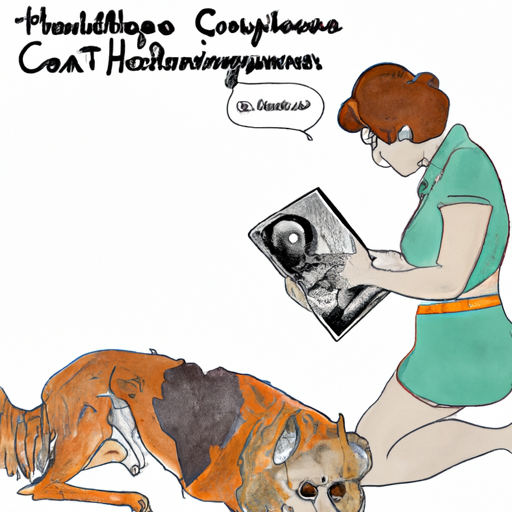As a dedicated caregiver to your beloved four-legged friend, it’s only natural for you to be concerned when you notice something out of the ordinary. In this case, we’re talking about a situation where your female dog’s private area is swollen and bleeding.
H2: Understanding the Female Dog’s Reproductive Cycle
Just like humans, dogs also have reproductive cycles. Female dogs, in particular, go through a process called the estrous cycle, which might be the reason behind the swelling and bleeding you’re observing. The estrous cycle has four stages:
- Proestrus: This is the stage where the female dog attracts males but is not yet ready to mate. This stage lasts about 9 days, and you may notice some swelling and bleeding.
- Estrus: This stage lasts around 9 days as well, and this is when the female dog is ready to mate. The bleeding may become less intense and take on a lighter color.
- Diestrus: This stage lasts about two months. If the dog is pregnant, this stage will last until she gives birth. If not, her body will return to a non-reproductive state.
- Anestrus: This is the resting phase and it lasts around six months.
H2: Possible Health Concerns
Sometimes, the swelling and bleeding might be indicative of health concerns. Here are a few possibilities:
- Pyometra: This is a serious infection of the uterus that can be life-threatening. It’s more common in older dogs who haven’t been spayed. Symptoms can include excessive thirst, lethargy, fever, and a swollen abdomen.
- Tumors or Cysts: These can cause swelling and bleeding. If you notice any unusual growths, contact your vet immediately.
- Trauma or Injury: If your dog has been in an accident or fight, she may have injuries causing the swelling and bleeding.
H2: What You Should Do
When you notice your dog’s private area is swollen and bleeding, it’s important to take action. Here’s what you should do:
- Monitor: Keep a close eye on your dog’s behavior and physical condition.
- Check for Other Symptoms: Is she eating and drinking normally? Is she urinating more frequently? Is she lethargic or unusually aggressive? These could be signs of a bigger problem.
- Consult a Veterinarian: If the swelling and bleeding persist for more than a few days, or if your dog seems unwell, it’s time to consult a vet.
H2: Prevention and Long-Term Care
Prevention is always better than cure. Here are some preventive measures and long-term care tips:
- Spaying: Spaying your dog can prevent many reproductive health issues, including the ones that cause swelling and bleeding.
- Regular Vet Check-ups: Regular visits to the vet can help catch any potential issues early.
- Proper Hygiene: Keeping your dog’s private area clean can prevent infections.
H2: FAQ Section
Q1: How long does a dog’s heat cycle last?
A1: On average, a dog’s heat cycle lasts about three weeks.
Q2: Can a spayed dog still go into heat?
A2: No, spaying removes the ovaries and uterus, preventing the heat cycle.
Q3: How often should I take my dog to the vet?
A3: Ideally, you should take your dog for a check-up at least once a year. However, puppies and older dogs may need more frequent visits.
Q4: Is it normal for my dog’s private area to bleed outside of her heat cycle?
A4: No. If you notice bleeding outside of your dog’s heat cycle, it’s best to consult a veterinarian.
Remember, as a caregiver, your role is to ensure the comfort and well-being of your pet. So, don’t hesitate to seek professional help when needed. Your furry friend is counting on you!



